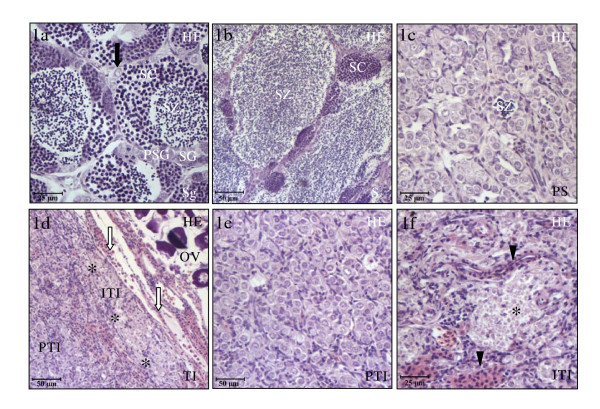Figure 1.
Testicular area of the gonad. The testicular area of the gonad at different stages of the second RC stained with hematoxylin-eosin. At spermatogenesis (a), spermatogonia stem cells and all germ cell type cysts formed the tubules of the testis. At spawning (b), the tubules are larger and full of free spermatozoa. At post-spawning (c), the main cell types in the tubules are spermatogonia stem cells and primary spermatogonia cysts. Some remaining spermatozoa can also be seen. At testicular involution (d-f), the testis is formed by spermatogonia stem cells and primary spermatogonia cysts that compose a dense tissue with no lumina in the tubules. Two morphological areas can be distinguished: the peripheral testicular area (d,e) and the internal testicular (d,f) area which is close to the efferent duct and the ovarian area and presents large necrotic areas surrounded by eosinophilic granulated cells. Scale bar = 25 μm (a,c,f,) and 50μm (b,d,e). Sg, Spermatogenesis; S, spawning; PS, post-spawning; TI, testicular involution; SG, spermatogonia cysts; PSG, primary spermatogonia cysts; SC, spermatocytes cysts; SZ, spermatozoa; PTI, peripheral testicular area in the involution stage; ITI, internal testicular area in the involution stage; OV, ovarian area; (arrow), spermatogonia stem cell; (arrow heads), eosinophilic cells; (white arrows), efferent duct; (asterisk), necrotic areas.

